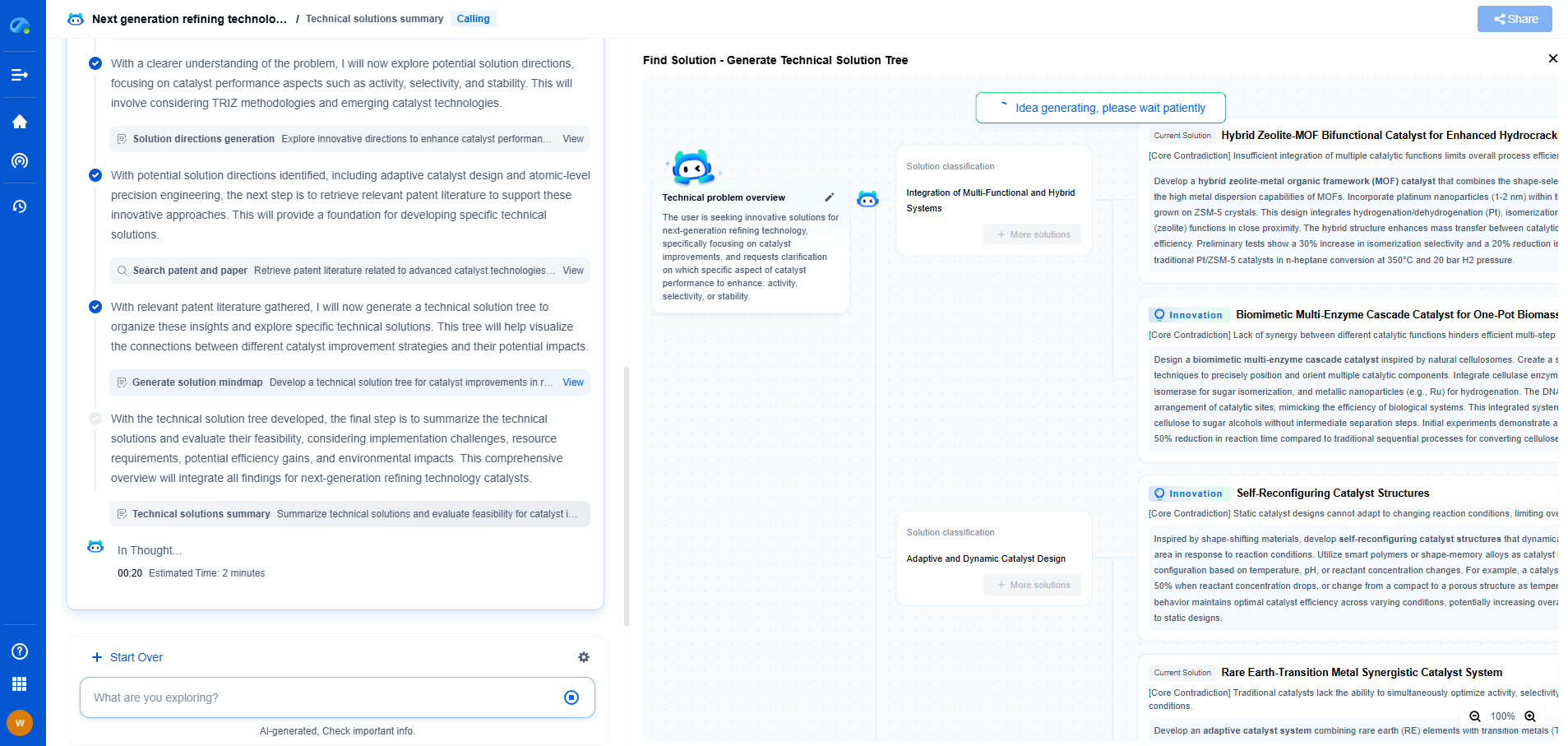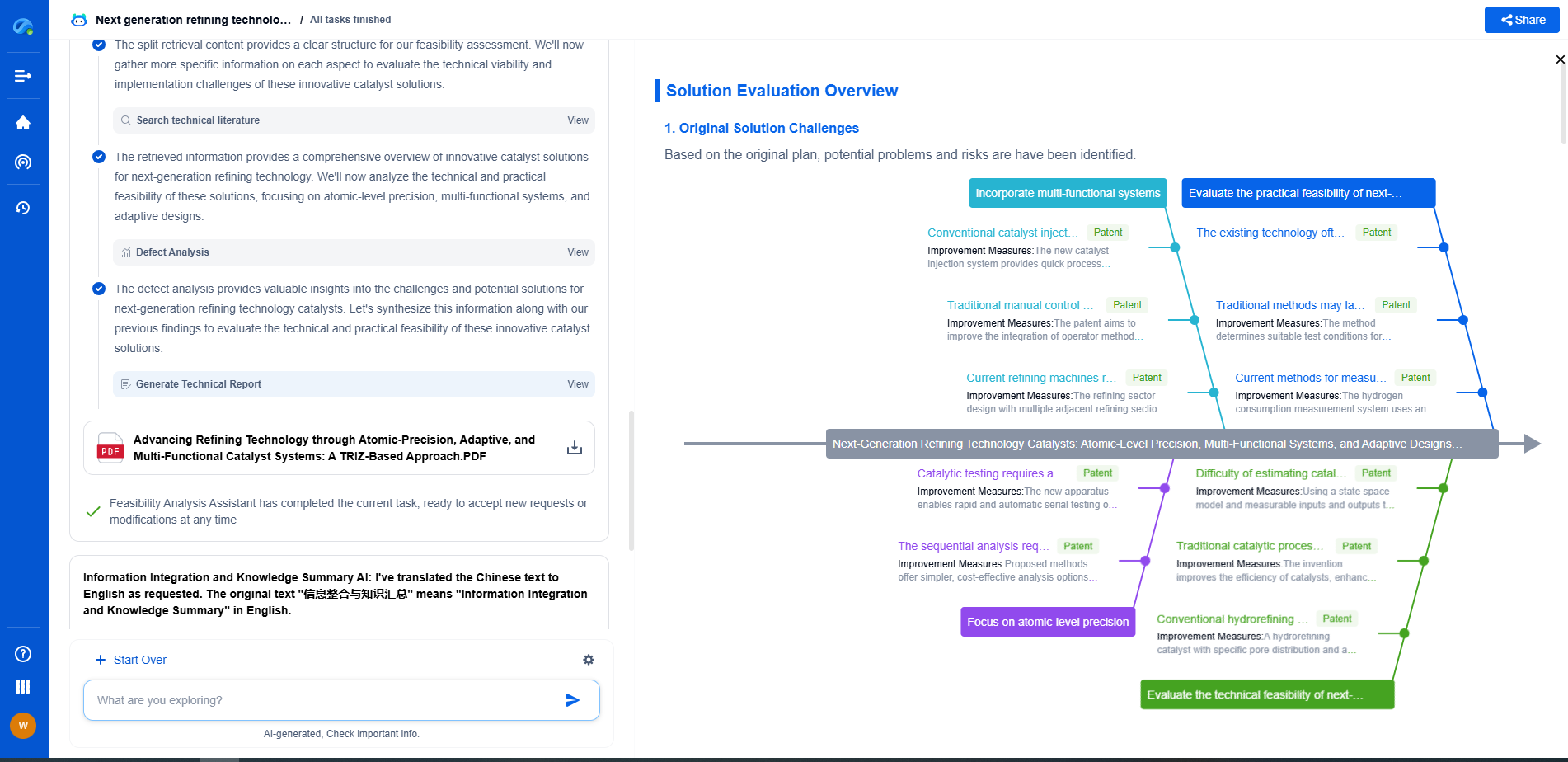ALU Designs Compared: RISC vs CISC Implementations
JUL 4, 2025 |
The world of computer architecture is vast and intricate, with many components playing critical roles in the functioning of processors. Among these components, the Arithmetic Logic Unit (ALU) is crucial, as it performs fundamental arithmetic and logical operations. The design of ALUs tends to vary significantly between different architectures, particularly between Reduced Instruction Set Computing (RISC) and Complex Instruction Set Computing (CISC) implementations. This article delves into the distinctions between these two paradigms in the context of ALU designs.
The Basics of ALU in Computer Architecture
An ALU is a digital circuit within the processor that performs arithmetic and logical operations on binary data inputs. It typically comprises circuits for operations like addition, subtraction, multiplication, bitwise operations, and comparisons. The efficiency and speed at which an ALU operates are pivotal for the overall performance of a CPU.
RISC vs. CISC: The Philosophical Divide
Before exploring ALU designs, it's essential to grasp the underlying philosophies of RISC and CISC architectures. RISC, or Reduced Instruction Set Computing, is built around the idea of executing simple instructions that can be completed in a single clock cycle. This simplicity aims to optimize speed and efficiency. In contrast, CISC, or Complex Instruction Set Computing, employs a broader set of instructions, enabling the execution of complex operations through fewer lines of assembly code, but potentially requiring multiple clock cycles per instruction.
ALU Design in RISC Implementations
RISC architectures prioritize simplicity and efficiency, which is reflected in their ALU designs. Here, the ALU is designed to perform basic operations rapidly, ensuring minimal instruction cycle time. Due to the straightforward instruction set, RISC ALUs are often less complex than their CISC counterparts, allowing for quick execution times and reduced power consumption.
One of the key advantages of RISC ALUs is their ability to handle instructions uniformly, leading to a more predictable performance. This predictability simplifies the pipelining process—a technique used to execute multiple instructions simultaneously—enhancing overall processing speed.
ALU Design in CISC Implementations
CISC architectures, by contrast, feature ALUs that are more complex, designed to execute a wide array of instructions, some of which are quite intricate. This complexity allows CISC processors to perform multi-step operations or access memory directly as part of a single instruction, potentially reducing the program length.
However, the intricacy of the CISC ALU can sometimes lead to slower execution speeds for individual instructions. This is because complex instructions may span multiple clock cycles, which can complicate the pipelining process and lead to inefficiencies.
Performance Considerations: Speed vs. Versatility
When comparing RISC and CISC ALUs, one must consider the trade-offs between speed and versatility. RISC ALUs tend to outperform CISC ALUs in terms of speed due to their simplicity and efficiency in executing instructions quickly. This is advantageous in applications where time-critical processing is essential, such as in real-time systems.
Conversely, CISC ALUs excel in applications that benefit from versatility and compact code size. By reducing the number of instructions needed to accomplish a task, CISC processors can enhance software development efficiency and reduce memory usage, which is beneficial in systems with constrained memory resources.
The Role of Compiler Design
Another factor influencing the performance of RISC and CISC ALUs is compiler design. RISC architectures often rely heavily on advanced compiler techniques to optimize instruction scheduling and parallelism, extracting maximum performance from simple instructions. CISC architectures, with their more complex instruction sets, place less burden on the compiler but may require more sophisticated instruction decoding and execution handling.
Future Trends in ALU Design
As technology evolves, the boundaries between RISC and CISC designs continue to blur. Modern processors often incorporate elements of both architectures, seeking to combine the speed of RISC with the versatility of CISC. Looking ahead, advancements in semiconductor technology and machine learning may further influence ALU designs, driving innovations that enhance processing capabilities while maintaining efficiency.
In Conclusion
The debate between RISC and CISC implementations remains a significant consideration in the design of ALUs. Each approach offers distinct advantages and challenges, influencing factors like processing speed, efficiency, and complexity. Understanding these differences is crucial for architects and engineers as they continue to innovate and develop more advanced computing systems. Whether prioritizing speed through simplicity or embracing complexity for versatility, the choice of ALU design ultimately depends on the specific needs and goals of the application.
Accelerate Breakthroughs in Computing Systems with Patsnap Eureka
From evolving chip architectures to next-gen memory hierarchies, today’s computing innovation demands faster decisions, deeper insights, and agile R&D workflows. Whether you’re designing low-power edge devices, optimizing I/O throughput, or evaluating new compute models like quantum or neuromorphic systems, staying ahead of the curve requires more than technical know-how—it requires intelligent tools.
Patsnap Eureka, our intelligent AI assistant built for R&D professionals in high-tech sectors, empowers you with real-time expert-level analysis, technology roadmap exploration, and strategic mapping of core patents—all within a seamless, user-friendly interface.
Whether you’re innovating around secure boot flows, edge AI deployment, or heterogeneous compute frameworks, Eureka helps your team ideate faster, validate smarter, and protect innovation sooner.
🚀 Explore how Eureka can boost your computing systems R&D. Request a personalized demo today and see how AI is redefining how innovation happens in advanced computing.
- R&D
- Intellectual Property
- Life Sciences
- Materials
- Tech Scout
- Unparalleled Data Quality
- Higher Quality Content
- 60% Fewer Hallucinations
Browse by: Latest US Patents, China's latest patents, Technical Efficacy Thesaurus, Application Domain, Technology Topic, Popular Technical Reports.
© 2025 PatSnap. All rights reserved.Legal|Privacy policy|Modern Slavery Act Transparency Statement|Sitemap|About US| Contact US: help@patsnap.com

